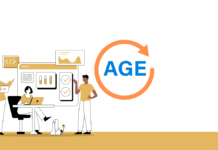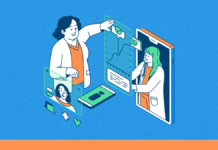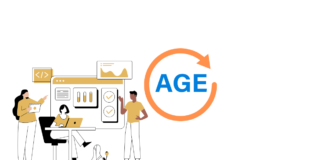The Unified Health Interface (UHI) has emerged as a game-changer in India’s healthcare industry. With its goal of digitizing healthcare records and enabling interoperability, UHI is a significant component of the Ayushman Bharat Digital Mission (ABDM) and the National Digital Health Mission (NDHM). In this article, we analyze the impact of UHI on the healthcare landscape in India and its implications for the nursing profession.
Understanding UHI: A Digital Platform for Health Services
UHI serves as an open IT network that provides a digital platform for all health services. It aims to address the fragmented and closed nature of the existing health systems in India. Under NDHM, UHI facilitates seamless coordination between health service providers and patients by offering a range of services such as booking appointments, teleconsultations, lab bookings, blood donations, and ambulance services.
UHI, similar to the Unified Payment Interface (UPI) for financial transactions, enables interoperability between various digital solutions within the healthcare sector. This concept draws inspiration from the success of UPI in revolutionizing digital payments in India. Another predecessor to UHI is the Unique Identification Authority of India (UIDAI) and its Aadhaar system.
Aadhaar, with its unique identification numbers, has played a significant role in facilitating seamless transactions and authentication processes in various domains, including healthcare.
The Visionary Minds Behind the Unified Health Interface (UHI) Platform
Dr. Indu Bhushan was the first CEO of Ayushman Bharat and created the groundwork for healthcare infrastructure and digitization.
The visionary behind UHI is Mr. RS Sharma, the former CEO of the National Health Authority, who previously served in important positions in UIDAI and TRAI. With his extensive experience and expertise and a team of people, Mr. Sharma recognized the need for a unified platform to transform the healthcare landscape in India.
Drawing from the success of UIDAI’s Aadhaar and the power of interoperability, he envisioned UHI as a solution that would empower patients, healthcare providers, and other stakeholders to seamlessly connect and collaborate within the digital healthcare ecosystem.
The think tank behind CoWIN, the successful digital platform for COVID-19 vaccination in India, also played a crucial role in the development of UHI. CoWIN demonstrated the potential of a unified digital platform in managing a nationwide healthcare program efficiently.
Leveraging the expertise and knowledge gained from CoWIN, the team behind UHI is working towards creating a robust and user-friendly ecosystem that leverages the power of UHI to revolutionize healthcare delivery in India.
Currently Sh. S. Gopalakrishnan is the CEO of the National Health Authority.
Enhancing Patient Care through UHI
UHI brings several benefits to patients, contributing to improved access and quality of healthcare services. Some key advantages include:
Improved Access to Healthcare:
UHI enables patients to discover and connect with a wide range of healthcare providers, ensuring enhanced access to medical services, including nursing care.
Greater Choice of Applications:
UHI allows patients to choose from various applications to book appointments, access teleconsultations, and explore other health services, providing them with more flexibility and control.
Seamless Healthcare Experience:
With UHI, patients can seamlessly navigate the healthcare ecosystem, from booking appointments to conducting transactions, all within their preferred application.
Empowering Nursing Professionals with UHI Enabled Apps
Nursing professionals play a vital role in patient care, and UHI-enabled apps empower them by:
Greater Discoverability:
UHI enables nursing professionals to list their services, enhancing their visibility and making it easier for patients to locate specialized nurses in their area.
Expanded Scope of Practice:
Through UHI, nursing professionals can leverage technology to expand their offerings, such as remote patient monitoring and home healthcare services, leading to enhanced job opportunities and professional growth.
Access to Health Records:
UHI’s unified health records system ensures that nursing professionals have access to accurate patient information, enabling them to provide more personalized and efficient care.
The Role of UHI in Nursing Education and Research
UHI’s impact extends beyond clinical practice and directly influences nursing education and research. Some key areas where UHI contributes are:
Data-Driven Research:
UHI’s digitized health records provide a vast pool of data for nursing research, facilitating evidence-based practice and promoting advancements in healthcare.
Enhanced Education and Training:
UHI’s technological advancements can be leveraged in nursing education and training programs, preparing future nurses to navigate digital healthcare systems effectively.
Collaboration and Knowledge Sharing:
UHI fosters collaboration among nursing professionals and institutions, allowing them to share best practices, research findings, and educational resources seamlessly.
Unifying Nurses Nationwide: HPR Empowering Nurses through Digital Connectivity and Collaboration
The Health Professional Registry (HPR) for nurses serves as a comprehensive repository within India’s healthcare system. It is an integral part of the Ayushman Bharat Digital Mission (ABDM) and plays a crucial role in connecting nurses with patients and healthcare providers.
By registering on the HPR platform, nurses gain a unique and trustable identity, enabling them to establish an online presence and enhance their discoverability.
This registry facilitates seamless communication, collaboration, and coordination among nurses, patients, and other healthcare professionals.
In conjunction with the Health Professional Registry (HPR), the Indian Nursing Council is also accelerating the registration process for nurses through the NRTS (Nursing Registration Tracking System). Presently, approximately 1.1 million nurses have completed their registration on the NRTS platform, receiving a unique identifier (NUID) recognized by the Indian Nursing Council for nurses practicing both within India and internationally.
Individual nurses are welcome to enlist themselves on the Health Professional Registry and associate their NUID from NRTS with this platform.
Moreover, the HPR ensures that only qualified and competent nurses with the necessary training and credentials are eligible for registration, ensuring the provision of high-quality and ethical nursing care.
By leveraging the HPR, nurses can effectively contribute to the transformation of India’s healthcare landscape, enhance patient outcomes, and improve the overall delivery of healthcare services.
The Potential for Major Players to Harness the Power of UHI
Despite the current lack of applications built on UHI, recent developments indicate that major players in the healthcare industry are recognizing the potential of UHI. Their involvement brings expertise and resources that can accelerate the development of user-friendly applications, leading to a robust ecosystem that leverages UHI’s power for transformative healthcare experiences.
The Unified Health Interface (UHI) has emerged as a transformative force in India’s healthcare landscape. By enabling interoperability, digitizing health records, and offering a wide range of services, UHI enhances patient care, empowers nursing professionals, and drives advancements in nursing education and research.
As the nursing profession embraces the possibilities offered by UHI, it is crucial for nurses to stay updated with the evolving digital healthcare landscape and leverage UHI’s potential to deliver high-quality care to patients and harness the power of technology. The potential for major players in the healthcare industry to harness the power of UHI further strengthens the prospects of this digital platform.










